Northern Cardinal Nesting Behaviors: Their Breeding Habits
Have you ever seen a bright red bird in your backyard? That’s probably a Northern Cardinal! These beautiful birds are famous for their red feathers and pointy crests on their heads.
Cardinals are not just pretty to look at – they’re also amazing nest builders and caring parents. In this guide, we’ll learn all about how cardinals make their homes and take care of their babies.
We’ll discover the special ways they find good spots for their nests, how they build them, and how they raise their chicks. Get ready to explore the exciting world of cardinal families!
Key Takeaways
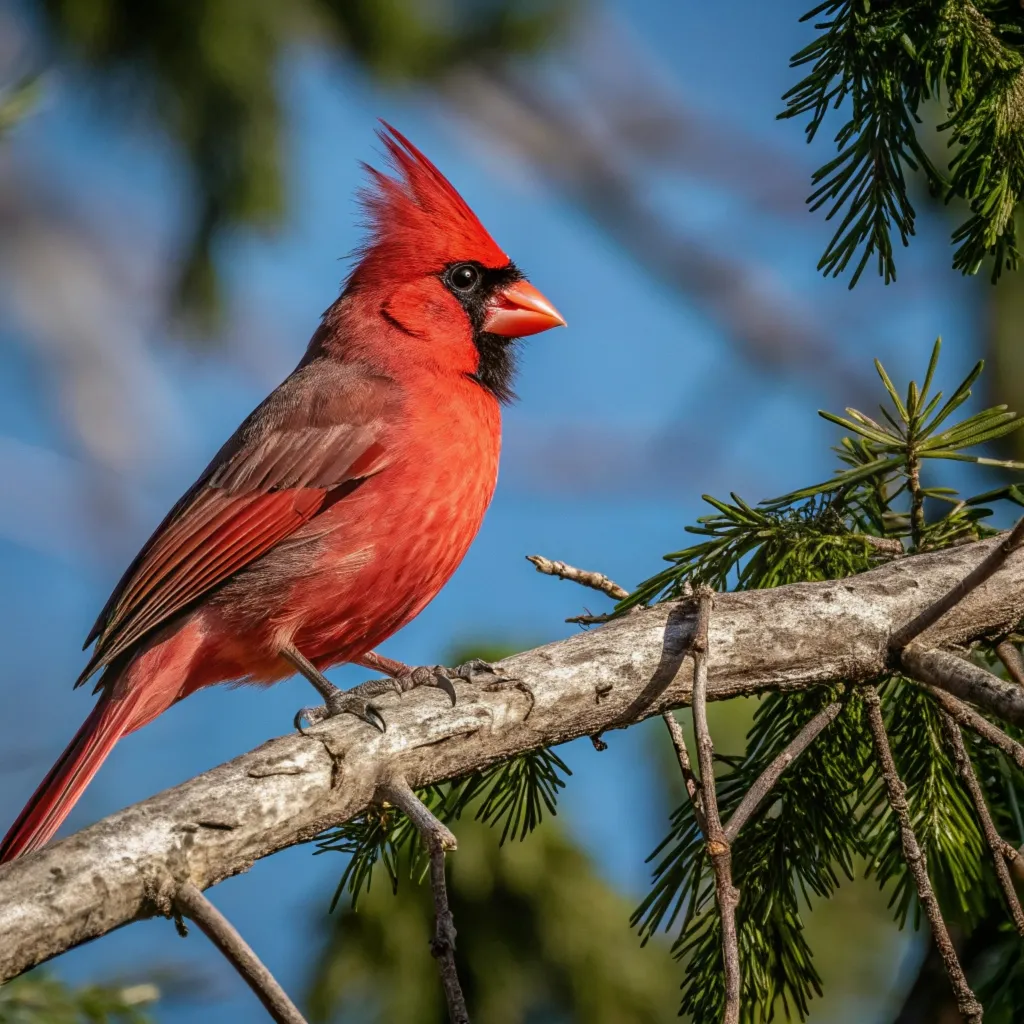
- Northern cardinals breed multiple times per year, typically from March to September
- Males and females engage in elaborate courtship rituals, including swaying and soft singing
- Cardinals build cup-shaped nests in dense shrubs or trees using twigs, bark, and grass
- Females lay 3 to 4 eggs per clutch, which are incubated for 11 to 13 days
- Both parents participate in feeding and caring for the chicks
- Cardinals are fiercely territorial during breeding season, defending areas of 3 to 6 acres
- Nesting pairs often return to the same territory each year but build new nests
- The breeding season can span three seasons: spring, summer, and fall
- Cardinals do not use nest boxes and prefer natural nesting sites
- It is illegal to disturb nesting Northern cardinals in the United States
Courtship and Pair Bonding
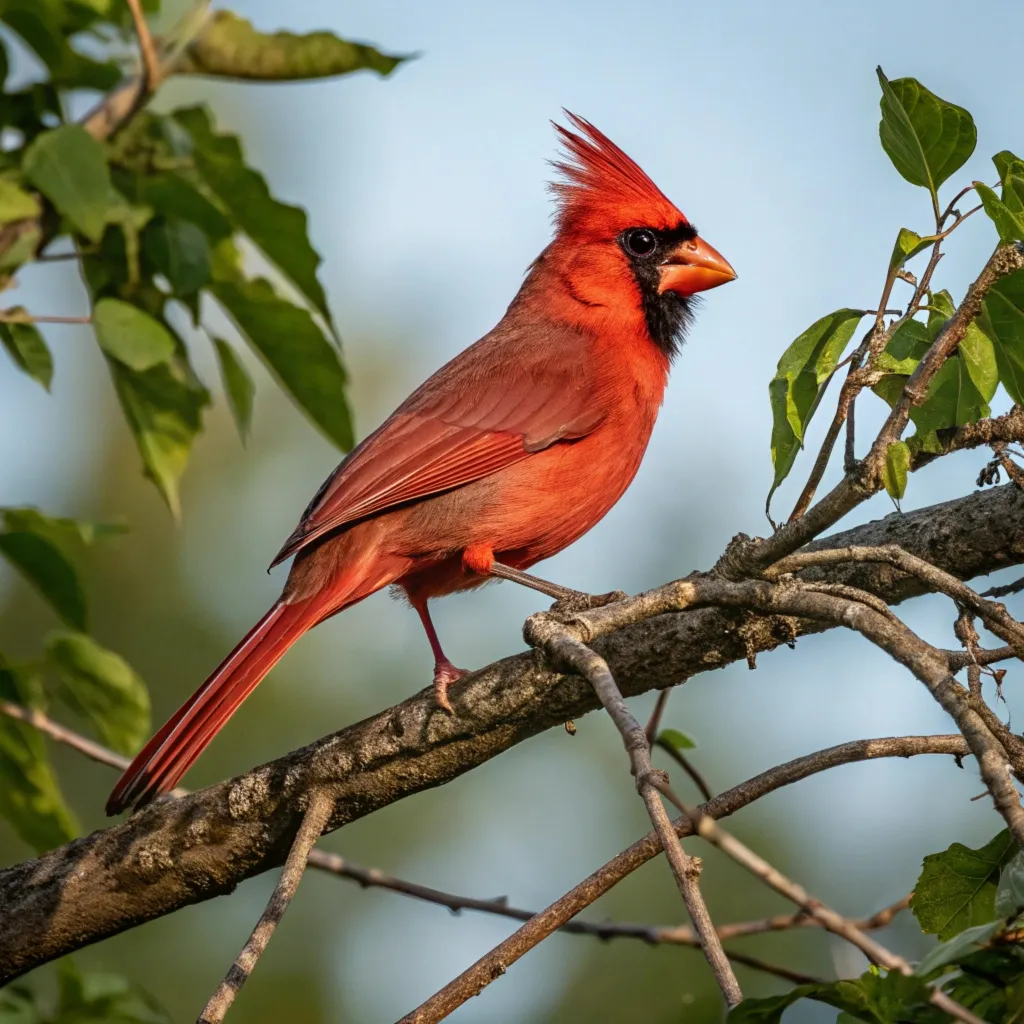
Northern cardinal courtship begins as winter transitions to spring. Males and females engage in a captivating dance of attraction.
They raise their heads high and sway back and forth, accompanied by soft, melodious songs. This intimate display strengthens their bond and sets the stage for the breeding season ahead.
Once paired, the male demonstrates his commitment through a touching gesture. He feeds the female, passing food from his beak to hers in what appears to be a gentle kiss. This behavior not only nourishes the female but also reinforces their partnership.
When cardinals want to start a family, they do a special dance. The boy cardinal and girl cardinal move their heads up and down and sing soft songs.
This helps them become friends. Then, the boy cardinal gives food to the girl cardinal. It looks like they are kissing! This shows they like each other and are ready to be parents together.
Selecting the Perfect Nesting Site
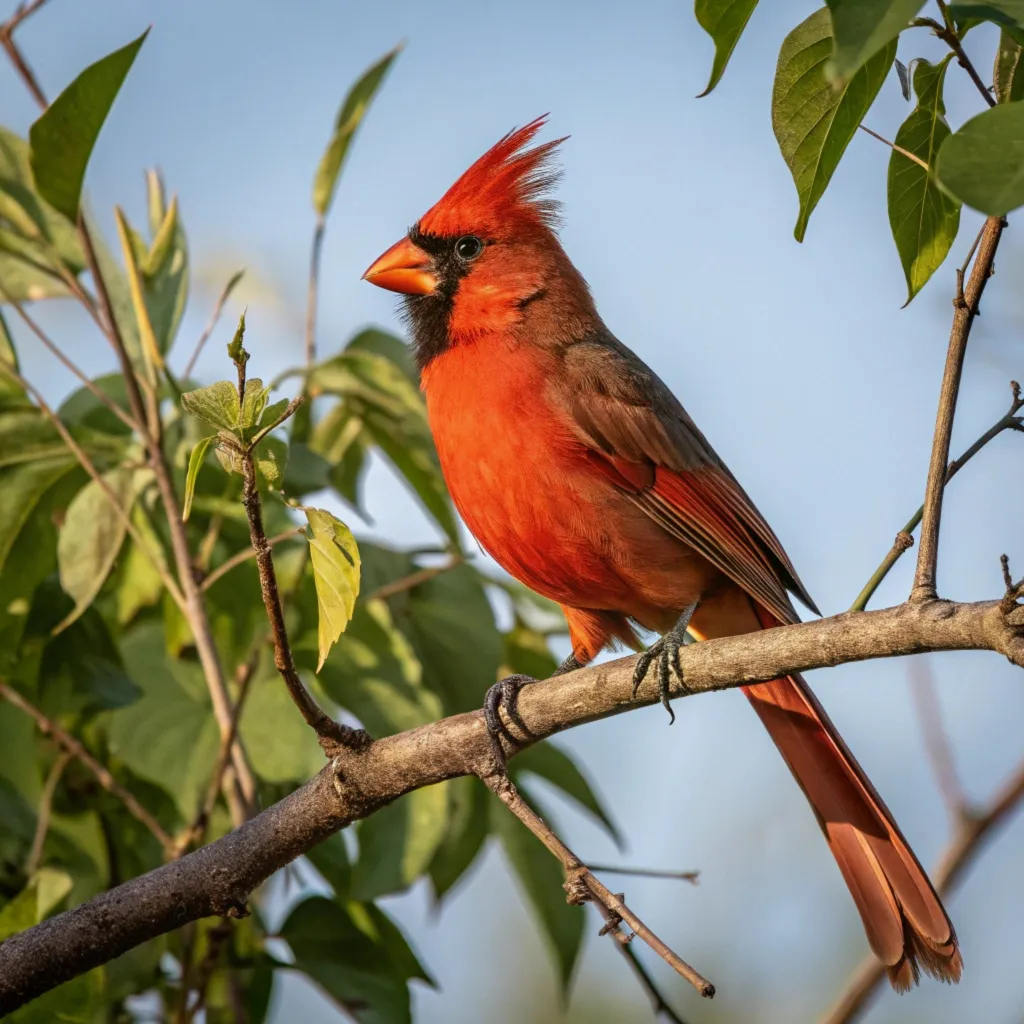
Cardinals are meticulous in choosing their nesting location. The process of finding an ideal spot can take up to two weeks or more. They seek out dense shrubs, thorny bushes, or trees that offer protection and camouflage for their nest.
Interestingly, cardinal pairs often return to the same breeding territory year after year. However, they do not reuse old nests. Instead, they construct a new nest for each brood, ensuring optimal conditions for their offspring.
Cardinals are very careful when they pick a place for their nest. They look for bushes or trees that have lots of leaves to hide their nest.
It can take them a long time to find the right spot. They want to make sure their babies will be safe. Every year, cardinals often come back to the same area, but they always build a new nest for their eggs.
Nest Construction: A Feat of Avian Architecture

The female cardinal takes charge of nest building, although males occasionally contribute materials. She crafts a cup-shaped structure using a variety of natural elements:
- Twigs for the outer framework
- Strips of bark for reinforcement
- Grasses and leaves for lining
- Fine materials like hair for added softness
The female shapes the nest by crushing twigs with her beak to make them pliable. She then turns inside the nest, using her body as a mold and her feet to push materials into place. This process creates a snug, well-insulated home for the eggs and chicks.
Building a nest is hard work for cardinals. The girl cardinal does most of the work. She uses twigs, grass, and even hair to make the nest. She bends the twigs with her beak to make them fit.
Then she sits in the nest and moves around to make it the right shape. This makes a cozy home for the baby birds.
Egg Laying and Incubation

Once the nest is complete, the female lays 3 to 4 eggs on average. The eggs are white to greenish in color, often spotted or blotched with brown, gray, or purple. She typically lays one egg per day until the clutch is complete.
Incubation begins after the last egg is laid, ensuring synchronized hatching. The female takes on most of the incubation duties, which last for 11 to 13 days. During this time, the male brings food to his mate, supporting her as she keeps the eggs warm and protected.
After the nest is ready, the girl cardinal lays 3 or 4 eggs. The eggs are light in color with spots. She sits on the eggs to keep them warm. This is called incubation. It takes about 12 days for the eggs to hatch. While she sits on the eggs, the boy cardinal brings her food so she doesn’t have to leave the nest.
Chick Development and Parental Care
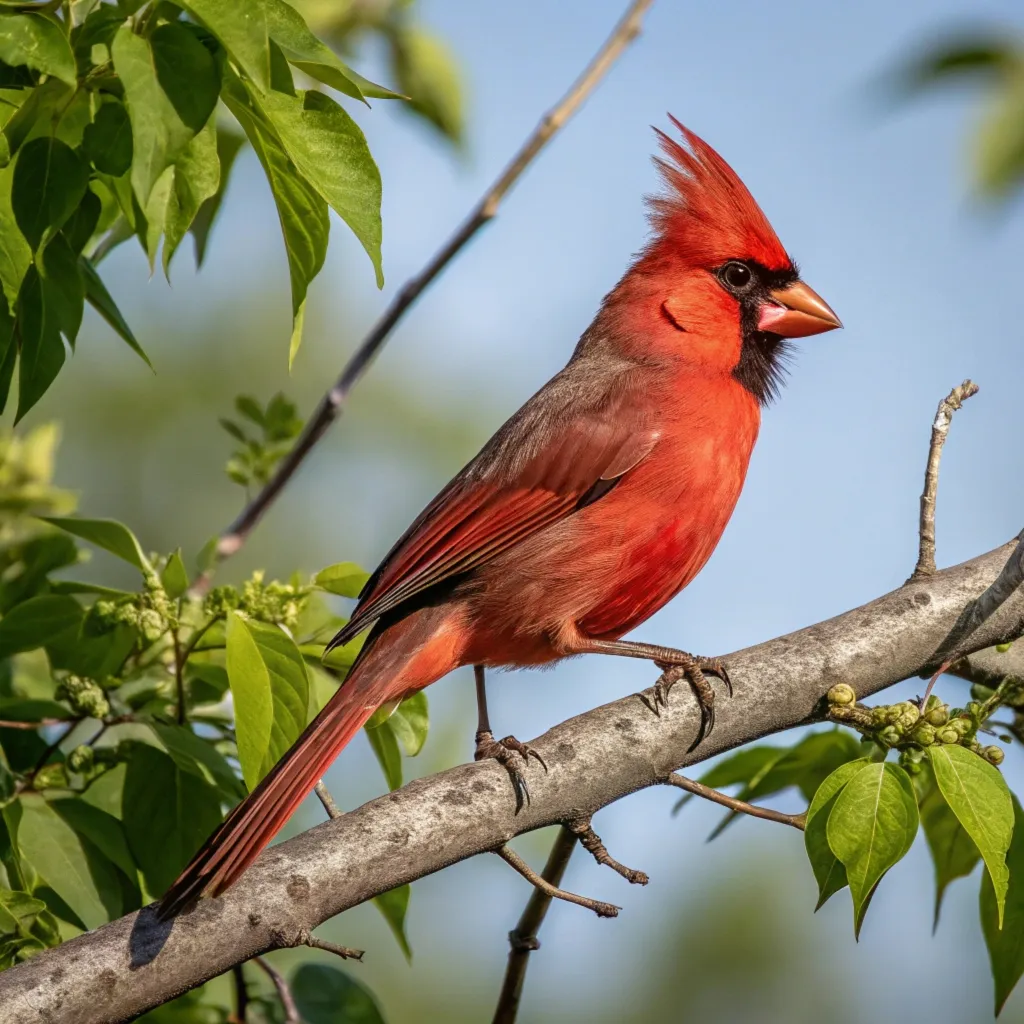
When the eggs hatch, the chicks emerge blind and helpless, covered only in a light fuzz. Both parents work tirelessly to feed and care for their offspring. The female broods the chicks for the first two days, while both parents bring a diet rich in insects to fuel rapid growth.
The young cardinals develop quickly, leaving the nest when they are 9 to 10 days old. However, parental care continues for several weeks after fledging. The adults feed and protect their young for 25 to 56 days, gradually teaching them to forage independently.
When the baby cardinals hatch, they can’t see and don’t have feathers. The parent birds work very hard to take care of them. They bring lots of food to help the babies grow.
After about 10 days, the baby birds leave the nest. But the parents still feed them and protect them for many more weeks. They teach the young birds how to find food on their own.
Multiple Broods and Extended Breeding Season
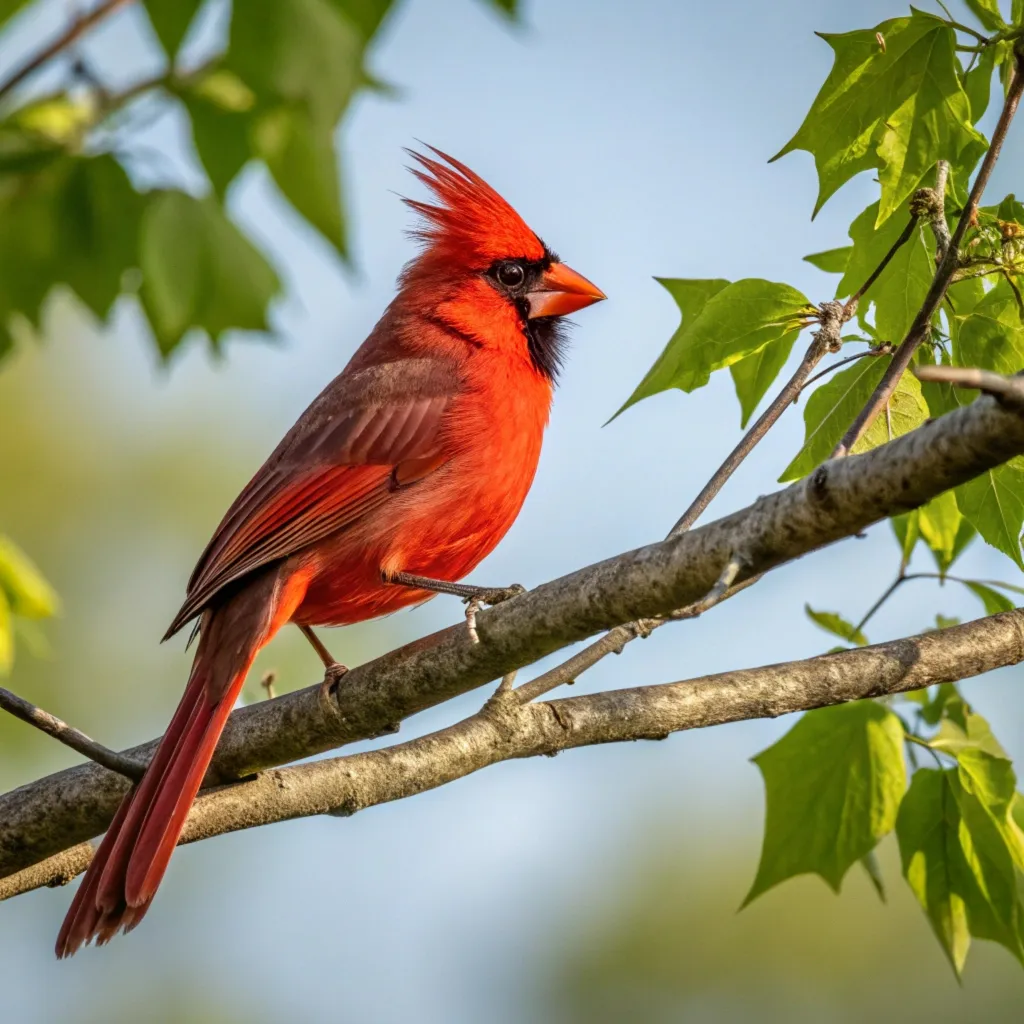
Northern cardinals are remarkable for their ability to raise multiple broods in a single year. They typically produce two to three clutches per season, with the first beginning around March and subsequent broods following through September.
This extended breeding period allows cardinals to take advantage of favorable conditions and increase their reproductive success. It also means that cardinal nesting activities can span three seasons in some regions – spring, summer, and fall.
Cardinals are special because they can have more than one family in a year. They usually have two or three groups of babies. They start in the spring and can keep having babies until the fall.
This means you might see cardinal nests in spring, summer, and even early fall. Having many babies helps more cardinals survive and grow up.
Territorial Behavior During Nesting
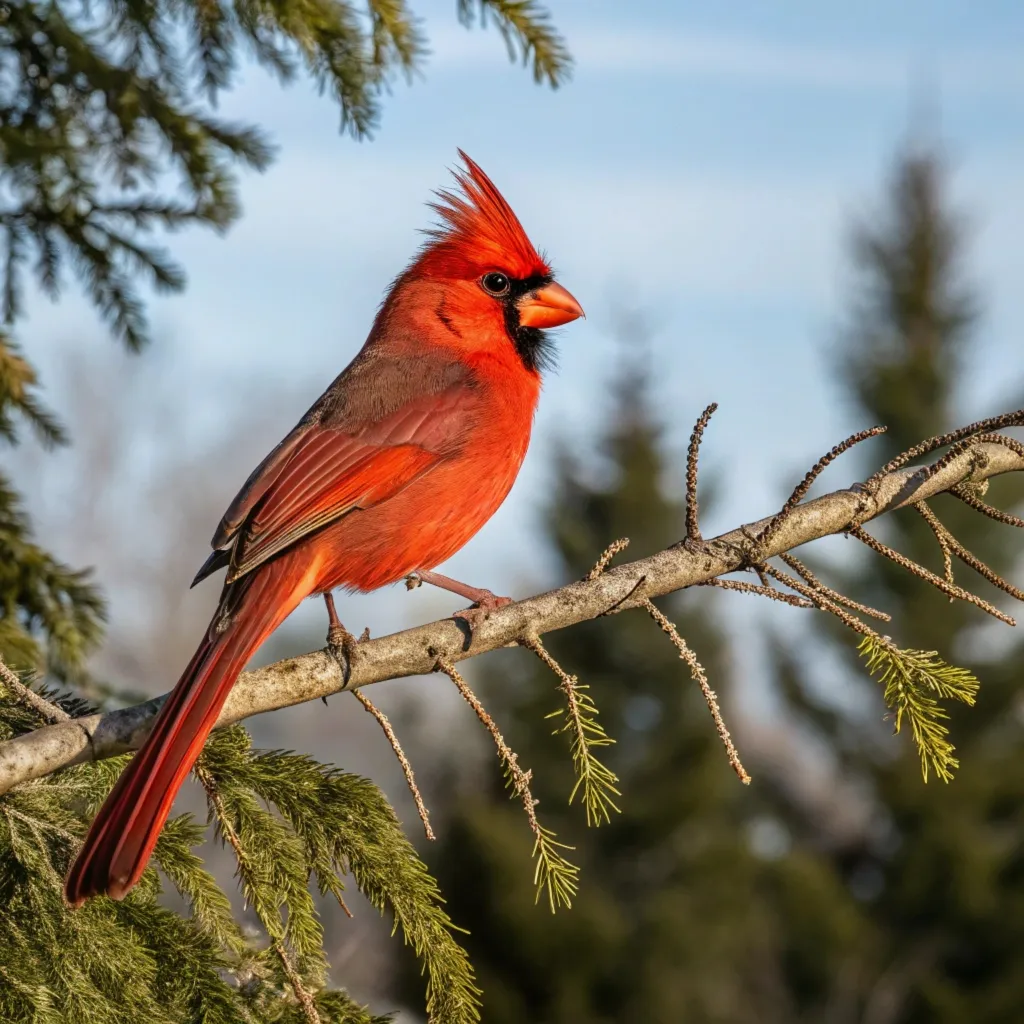
During the breeding season, Northern cardinals become fiercely territorial. Males defend areas ranging from 3 to 6 acres, chasing away other males that intrude on their space. Females also participate in territorial defense, driving away other females during courtship and nesting periods.
This aggressive behavior extends to their own reflections, with cardinals often seen fighting with windows or car mirrors, mistaking their image for a rival bird.
While these conflicts rarely result in serious injury, they demonstrate the intensity of cardinal territorial instincts.
When cardinals are making nests and raising babies, they become very protective of their home area. The boy cardinals chase away other boy cardinals. The girl cardinals chase away other girl cardinals.
They want to keep their family safe. Sometimes, cardinals even fight with their own reflection in windows or mirrors! They think it’s another bird trying to take their space.
Adaptations for Nesting Success

Cardinals display several adaptations that contribute to their nesting success:
- They thin out their nests as the season progresses, reducing insulation to prevent overheating of eggs and chicks in warmer weather.
- Their red plumage, derived from carotenoids in their diet, may play a role in mate selection and territorial signaling.
- Cardinals are adaptable in their choice of nesting sites, allowing them to thrive in various habitats, including urban and suburban areas.
Cardinals are smart birds that know how to make their nests better. When it gets hot, they make their nests thinner so the babies don’t get too warm.
Their bright red feathers help them find mates and show other birds to stay away. Cardinals can build nests in many different places, which helps them live in cities and towns as well as in the countryside.
Challenges to Cardinal Nesting
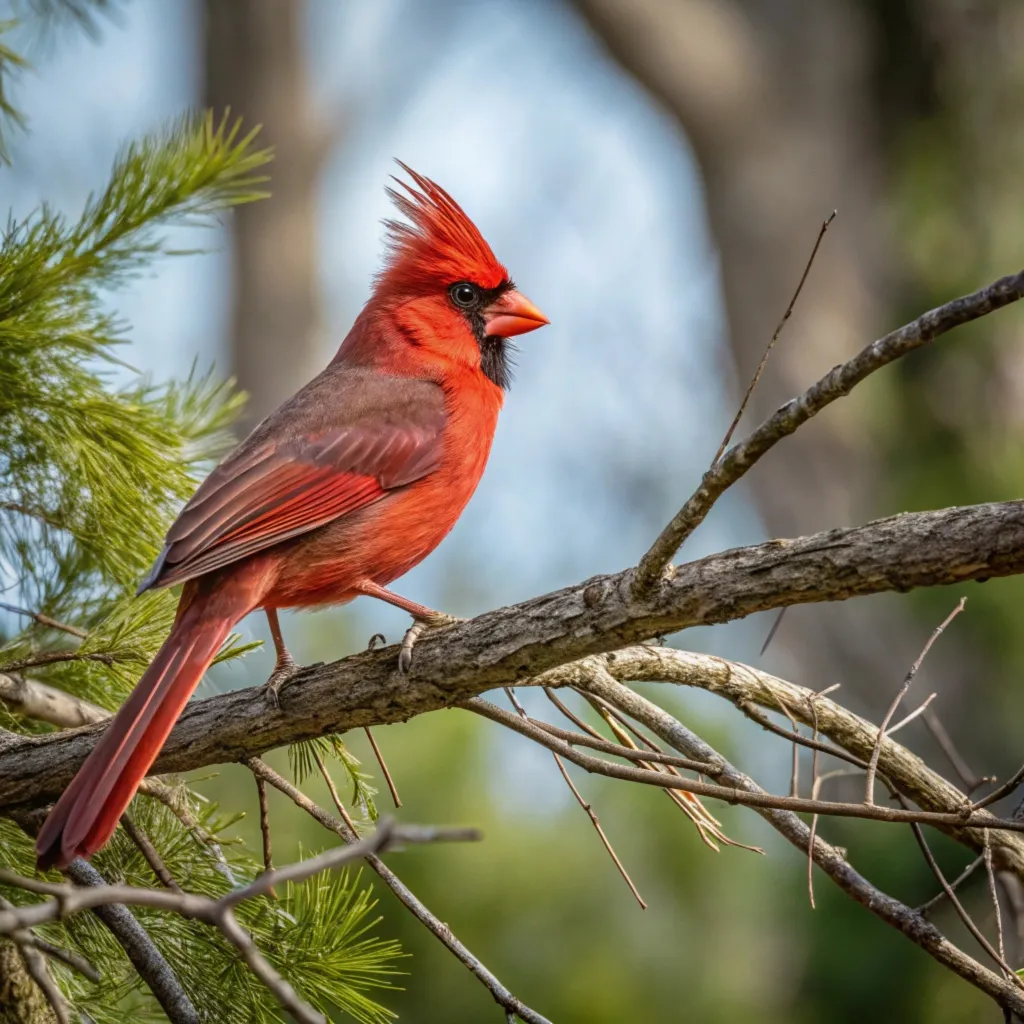
Despite their adaptability, Northern cardinals face several challenges during the nesting season:
- Brood parasitism by brown-headed cowbirds, which lay their eggs in cardinal nests
- Predation from various animals, including squirrels, snakes, and other birds
- Human disturbance, which can inadvertently disrupt nesting activities
It’s important to note that it is illegal to disturb or move Northern cardinal nests in the United States, as they are protected under the Migratory Bird Treaty Act.
Even though cardinals are good at taking care of their nests, they still face problems. Some birds, like cowbirds, put their eggs in cardinal nests.
Animals like squirrels and snakes might try to eat the eggs or baby birds. People can also cause trouble for nesting cardinals without meaning to. It’s against the law to move or bother cardinal nests because these birds are protected.
Creating Cardinal-Friendly Environments
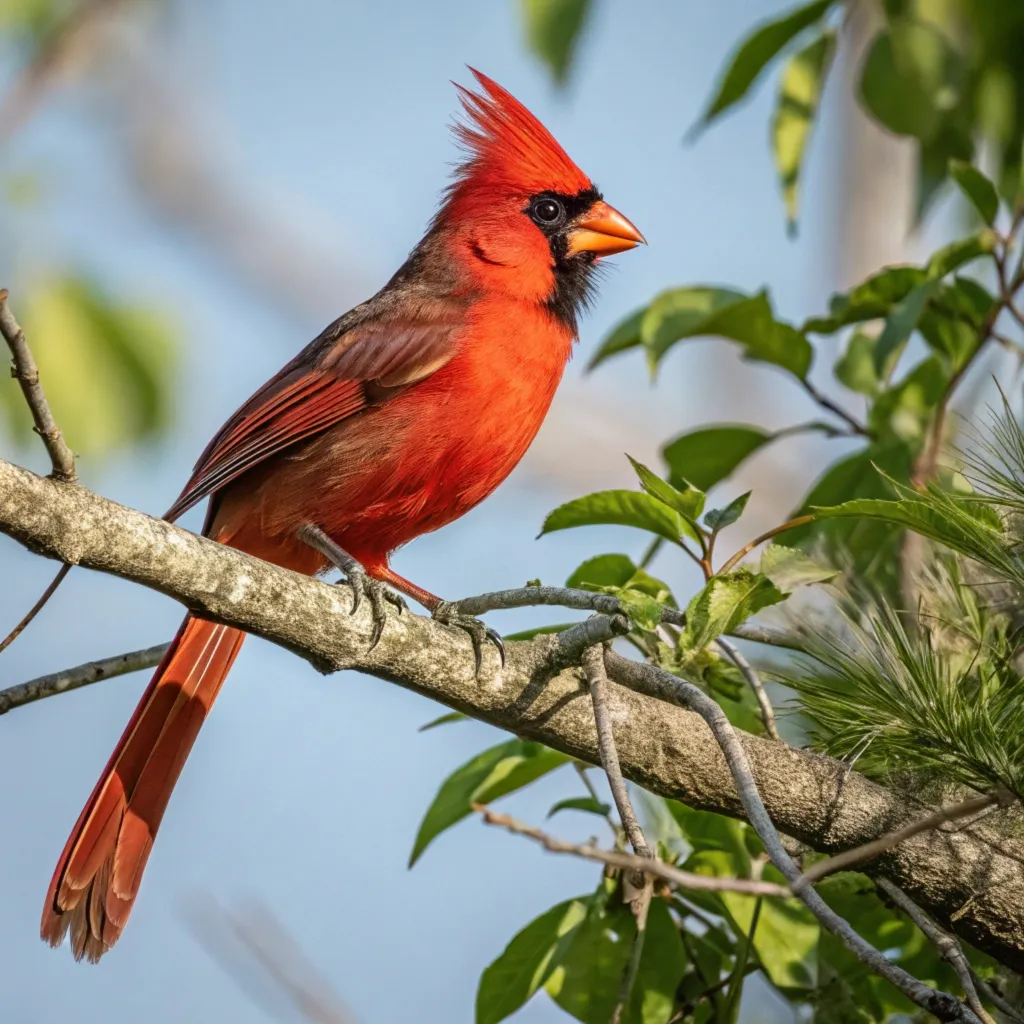
To support nesting Northern cardinals in your area, consider the following:
- Plant dense shrubs and trees that provide suitable nesting sites
- Offer black oil sunflower seeds in tray feeders to attract cardinals
- Maintain a water source, such as a birdbath, for drinking and bathing
- Avoid using pesticides that may harm the insects cardinals feed to their young
By understanding and supporting Northern cardinal nesting behaviors, we can help ensure the continued success of these beloved birds in our ecosystems.
You can help cardinals in your yard by doing some simple things. Plant bushes and trees for them to build nests in. Put out bird feeders with sunflower seeds that cardinals like.
Give them water to drink and bathe in. Don’t use chemicals that might hurt the bugs cardinals eat. By doing these things, you can make your yard a happy place for cardinals to live and raise their families.
FAQs
How long does the Northern cardinal breeding season last?
The Northern cardinal breeding season typically extends from March to September, allowing for multiple broods throughout spring, summer, and sometimes early fall.
Do male and female cardinals both build the nest?
While the female cardinal does most of the nest construction, males occasionally bring nesting materials to assist. The female shapes the nest using her body as a mold.
How many eggs do Northern cardinals lay?
Northern cardinals usually lay 3 to 4 eggs per clutch, with an average of 3 eggs. They may have 2 to 3 broods per breeding season.
How long do cardinal chicks stay in the nest?
Cardinal chicks leave the nest when they are about 9 to 10 days old. However, parents continue to feed and care for them for several weeks after fledging.
Do Northern cardinals use birdhouses or nest boxes?
Northern cardinals do not typically use birdhouses or nest boxes. They prefer to build their nests in dense shrubs, trees, or thickets.
How can I attract nesting cardinals to my yard?
To attract nesting cardinals, provide dense shrubs for nesting, offer black oil sunflower seeds in feeders, and maintain a water source. Planting native berry-producing plants can also help support their diet.
Is it legal to move a cardinal nest?
No, it is illegal to move or disturb Northern cardinal nests in the United States. They are protected under the Migratory Bird Treaty Act.
How do cardinals protect their nests?
Cardinals protect their nests through territorial behavior, chasing away intruders. They also choose well-concealed nesting sites in dense vegetation for added protection.
Do cardinal pairs stay together for life?
While some cardinal pairs may stay together for multiple breeding seasons or even years, they are not necessarily mated for life. Pairs may change from year to year.
How do cardinals care for their young after they leave the nest?
After fledging, cardinal parents continue to feed and protect their young for 25 to 56 days, gradually teaching them to forage independently.

Kashvi is a passionate bird enthusiast and nature lover who has been fascinated by the world of birds for years. With a keen eye for detail and a love for learning, Kashvi is dedicated to sharing her knowledge and insights with fellow bird enthusiasts on Avian Enthusiasts. Through her engaging and informative articles, Kashvi aims to inspire others to join her in exploring the fascinating world of birds and to promote a deeper appreciation for these incredible creatures.







